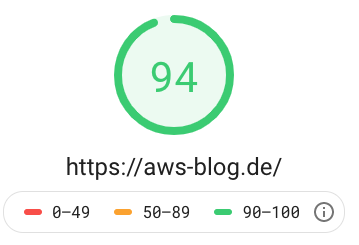Serverless Blog Migration
This content is more than 4 years old and the cloud moves fast so some information may be slightly out of date.
Heute haben wir den aws-blog.de auf serverless migriert. Dabei haben wir Geschwindigkeit und Stabilität gewonnen!
Geschwindigkeit
| System | Geschwindigkeitsindex |
|---|---|
| Wordpress |  |
| Hugo |  |
Dazu haben wir das -nach eigenen Angabe- “schnellste Framework für Webseiten” goHugo verwendet. Das System ist serverless, da es S3, Cloudfront und Route53 verwendet, keine Server mehr notwendig! Auch AWS verwendet gohugo manchmal, um für Repositories ganze Webseiten mit auszuliefern, z.B. beim iot-atlas.
In den nächsten Tagen könnte es sein, dass ein paar alte Daten noch in diversen Caches im Internet verweilen. Dabei bitte etwas Geduld, auch google&Co brauchen etwas Zeit um den Index neu aufzubauen.
